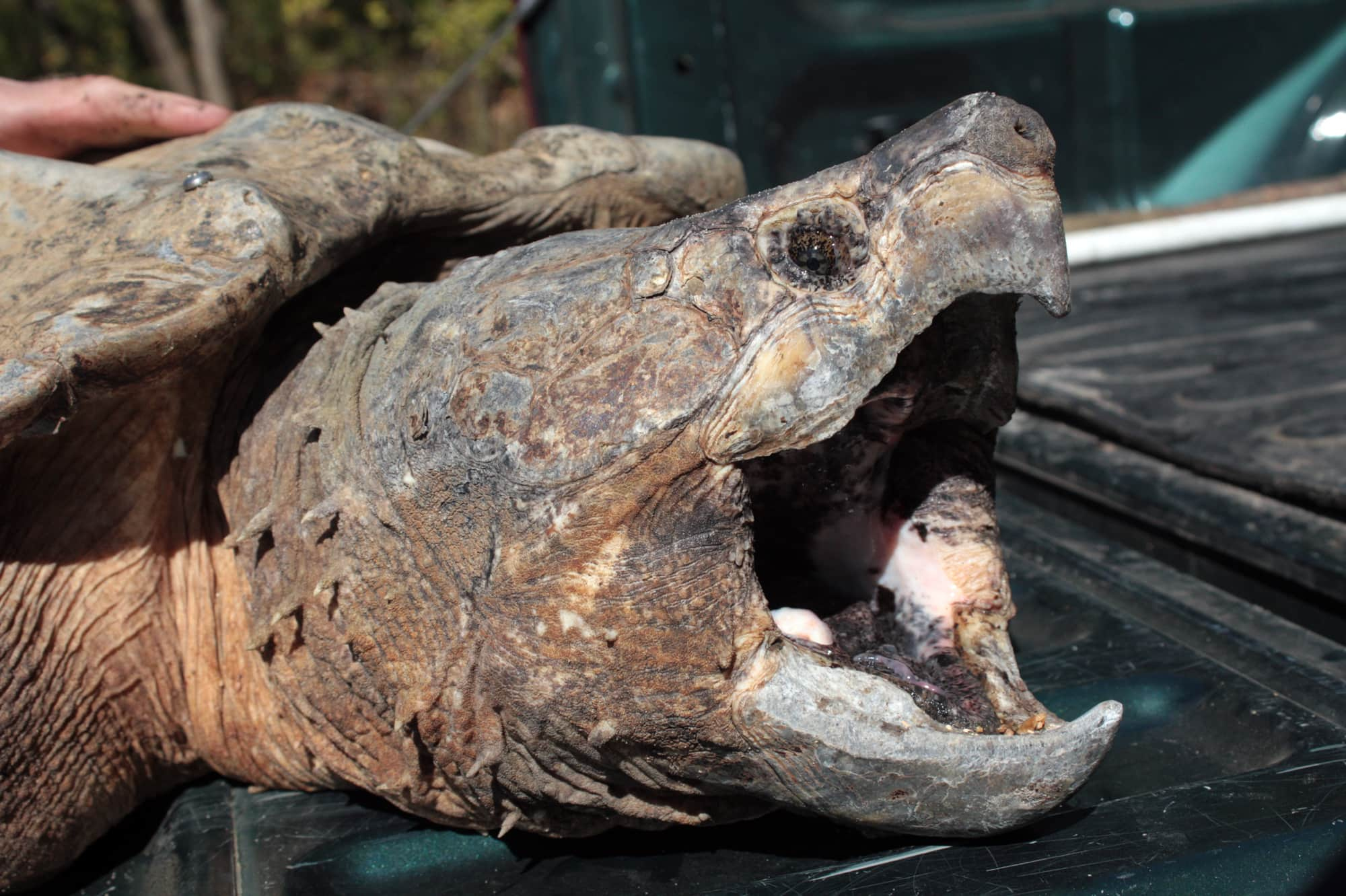Alabama Angler Hooks a Prehistoric Surprise
Alabama DCNR 11.02.12

On October 12, 2012, Woody Bozeman was fishing the Tallapoosa River for catfish just off the boat ramp at Ft. Toulouse National Historic Park in Wetumpka, Ala. At 11:30 p.m., he noticed the tip of his rod begin to bend slightly. In the 40 minutes that followed as he brought his catch to the surface, Bozeman would be surprised by the creature he’d hooked — an 83-pound alligator snapping turtle.
Not wanting to cut his line and send the turtle back to the river bottom with a hook in its mouth, Bozeman hauled the animal out of the water, carefully avoiding its beak. Once in the boat, he noticed the turtle had been tagged with a single metal screw fastened to the upper-right section of its shell.
“I figured this turtle was part of a research project so I contacted the Conservation Department to let them know what I’d caught,” Bozeman said.
According to Mark Sasser, Nongame Wildlife Coordinator for the Alabama Division of Wildlife and Freshwater Fisheries (WFF), Bozeman did the right thing by calling him. After consulting with Jim Godwin, a zoologist with Auburn University’s Alabama Natural Heritage Program, Sasser discovered that the turtle was tagged by Godwin during a 2004 cooperative research project with WFF.
“Alligator snapping turtles are a protected species in Alabama,” Sasser said. “While there is no federal protection for these animals at this time, they are a species of High Conservation Concern in Alabama. It is illegal to possess one or any part of one.”
In the 1970s, alligator snapping turtles experienced severe population declines throughout much of their range, primarily as a result of unmonitored commercial harvest supporting the soup industry. Alabama’s alligator snapping turtle population was almost wiped out by these commercial harvests, which were halted in the early 1990s when the turtle was placed on the state’s protected species list.
 Alligator snapping turtles are making slow progress toward a recovery, but they still face threats such as baited limb lines, trotlines, and hoop nets that are not checked on a regular basis.
Alligator snapping turtles are making slow progress toward a recovery, but they still face threats such as baited limb lines, trotlines, and hoop nets that are not checked on a regular basis.
“Habitat plays a major role in sustaining animal populations, but humans are the biggest threat to these turtles,” Sasser said. “As opportunistic scavengers, they can easily be hooked or trapped underwater, placing them at risk of drowning.”
Fortunately, the turtle caught by Bozeman is once again contributing to the species’ recovery efforts. On October 17, Sasser and Godwin collected new data from the animal including shell size, weight, and tissue and blood samples.
The turtle weighed 83.6 pound and its shell was almost 22 inches long. Turtles are slow growing animals that can live for more than 100 years. When Godwin first captured this animal on August 26, 2004, it weighed 80 pounds and its shell was less than an inch shorter.
“Old,” was Godwin’s reply when asked about the turtle’s age. “It could be anywhere from 40 to 75 years old,” he said. “There is really no way of knowing without intrusive testing.”
Once the measurements and tissue samples were taken, the turtle was released back into the Tallapoosa River.
“Our cooperation with Auburn University on research projects involving Alabama’s imperiled species such as the alligator snapping turtle are crucial in the recovery efforts for these animals,” Sasser said. As the turtle swam away, Sasser thanked Bozeman for assisting in the animal’s release.
The largest freshwater turtle in the world, the alligator snapping turtle has a bite force of more than 1,000 psi, enough to remove a finger. In comparison an alligator’s bite force is approximately 2,500 psi. For more information about alligator snapping turtles in Alabama, visit the Watchable Wildlife section of outdooralabama.com.

